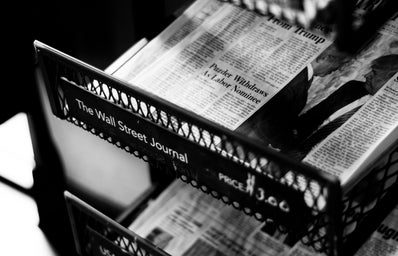Throughout history, women have been known to fight for the right to hold the same job as a man — let alone the same pay. Being a journalist is no exception to this concept. There is no definitive record of who the first ever female journalist was; however, the late 18th century through the entirety of the 19th century became a time where many women stepped up and took on the field of journalism across the globe. As a journalism major, I have always been fascinated with the history of journalism. In fact, one of the main things I remember from my AP United States history class in high school is the term “yellow journalism” — but that is neither here nor there. Since it is Women’s History Month, I am going to share what I’ve learned about some important women throughout the history of journalism.
To start off, I thought it was worth sharing the following video. In regards to how iconic it is, I will let the video speak for itself.
Clarissa Ward
I don’t remember when or how I first heard about Clarissa Ward, but what I do know is, she became one of my role models immediately. I even bought her book, “On All Fronts.” Unfortunately, due to how hectic my course load has been since starting college, I haven’t been able to read it all. Ward has worked for a variety of different news stations but is the current chief international correspondent for CNN. She has won numerous awards for her work. For almost two decades, she has reported on the frontlines of conflicts across the globe. She has first-hand interviewed all types of people, from public officials to leaders of terrorist organizations — even ordinary citizens. Her work can sometimes rely on her going to places the outside world wouldn’t dare going. She has gone undercover in many war-torn countries, most notably, her time spent in Syria in both 2014 and 2016. Ward continues to pursue the truth, even if that means staring danger in the eyes.
Barbara Walters
In December of 2022, the world said goodbye to an icon, Barbara Walters. She began her career in the 1960s as a writer and producer for NBC’s “Today.” In 1974, during her time at NBC, she became the first woman in history to hold the title of cohost in broadcast journalism. She has interviewed a wide range of people on camera and some of which are still being watched today. Walters conducted the interview with Monica Lewinsky when she broke her silence about her affair with Bill Clinton. During her career she even started and hosted “The View” in 1997 and didn’t retire from hosting until 2014. In 2015 she conducted one of her final interviews with Donald Trump during his presidential candidacy. She inspired many women as a public figure for many years and will continue to be even after her passing.
Ina Eloise Young
Though a female sports reporter is still fairly rare today, during Ina Eloise Young’s time it was incomprehensible. She was most likely the first female sports reporter in history. Before her brother passed away he taught her all the ins and outs of being a baseball fan. She saw her local newspaper was in a predicament when none of their male editors knew the first thing about baseball. She offered to do the job until they could find a male to do it. However, she ended up remaining the sports editor, as her boss realized she was the most qualified and best choice for the position. She covered a variety of sports — baseball being her favorite, went on the road with her local team to report on the games, and served on the rules committee for her area’s minor-league teams. Her career was steadily taking off, but in 1908 it skyrocketed when she covered the World Series. Many newspapers credited her reports on the game, and perhaps the most prolific baseball writer of her time, Tim Murnane, praised her knowledge on the sport. She was a pioneer for women in sports reporting, and even though she didn’t know it at the time, she is a huge inspiration to all kinds of people.
Dorothy Thompson
The time of Nazi Germany’s reign is a time most people look back on with great horror and disgust. Dorothy Thompson had those same feelings except she wasn’t looking back, she was looking at it as their reign unfolded. Prior to the rise of nazism, Thompson went undercover to get a story about the former King Karl the first, as it was rumored he may be planning to claim the Hungarian throne once again. No other journalist took the risk needed to report from the inside; therefore, she became known for her immense risk taking abilities in pursuit of a story. With this reputation preceding her, she was offered and accepted a job as the Vienna correspondent and central European bureau chief for the Philadelphia Public Ledger. Germany was seeing a rise of nazism even before 1933 when Hitler was appointed chancellor. Thompson was given the opportunity to interview Hitler in 1931. In her article for Cosmopolitan detailing the interview, she didn’t hold back and didn’t sugarcoat anything. She explained the difficulties with interviewing him, and how he gave “the impression of a man in a trance.” Consequently, she became the first American journalist to be personally banished by Hitler from Nazi Germany. In response to her expulsion, she profoundly stated, “My offense was to think that Hitler is just an ordinary man, after all.” Even after being forced to leave Germany, she continued to publicly oppose the Nazi regime — even if doing so put herself in harms way. Time magazine remarked that both Dorothy Thompson and First Lady Eleanor Roosevelt were “undoubtedly the most influential women in America” in 1939. Her contributions to journalism were nothing short of remarkable, and, at the very least, she will continue to be one of my role models.


